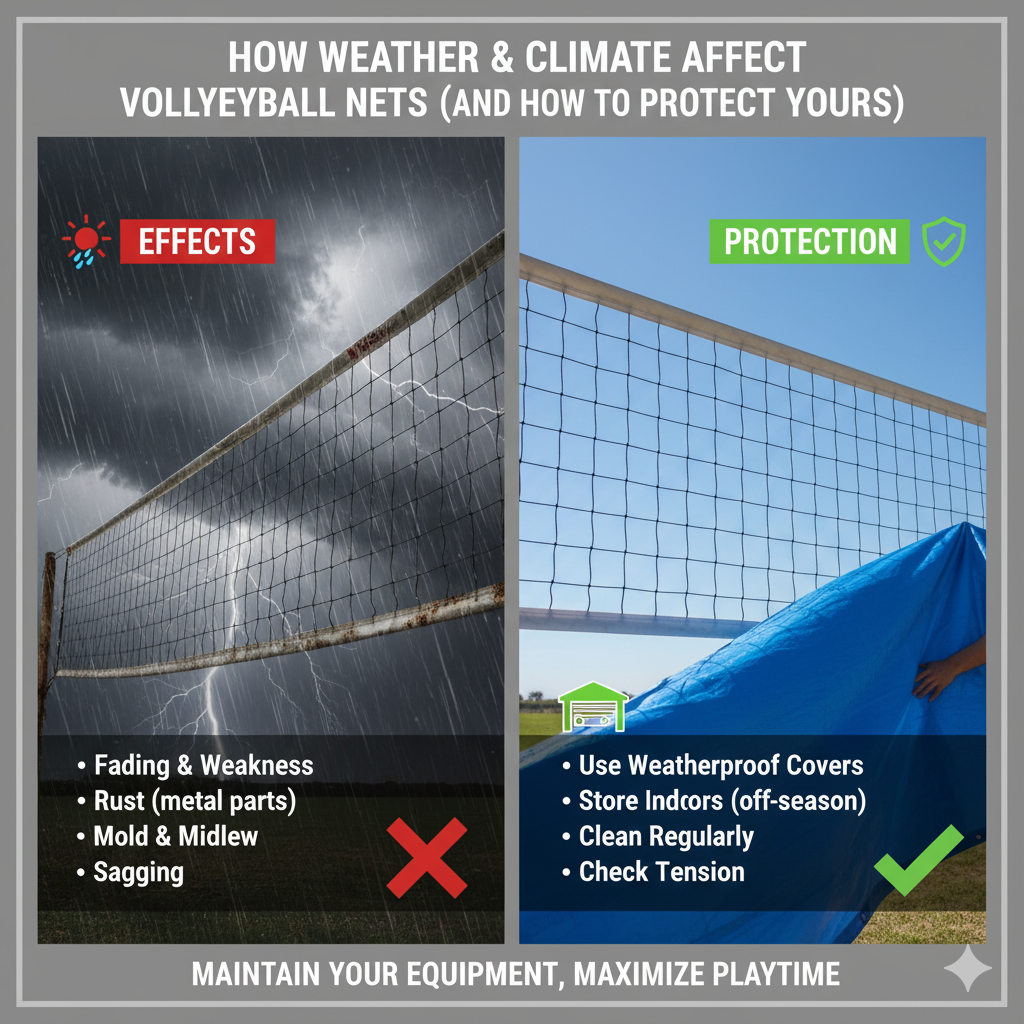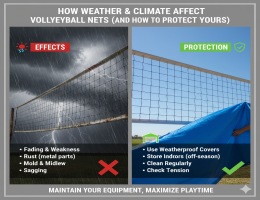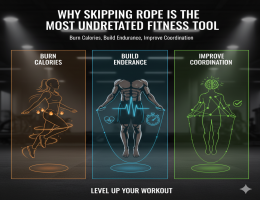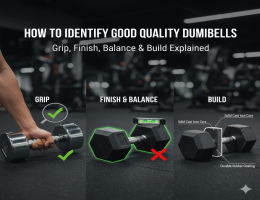
How Weather & Climate Affect Volleyball Nets (and How to Protect Yours)
Posted on: 06 Nov, 2025
Volleyball is played everywhere — from indoor courts to beaches, school playgrounds, and public parks. But one thing many players and coaches don’t realize is that weather and climate have a big impact on the durability of a volleyball net.
A net that lasts years in one environment may wear out quickly in another. Understanding this can help you choose better equipment and also maintain it properly.
1. Sunlight Can Weaken the Net Fibers
If your volleyball net stays under strong sunlight, the UV rays slowly weaken the fibers.
This causes:
- Fading color
- Fiber cracking
- Loss of tension strength
Outdoor courts experience this more than indoor courts.
How to protect:
Choose a net made from UV-resistant synthetic fibers, and store it in shade when not in use.
Premium nets like Koxtons Volleyball Nets are designed with UV-treated material to handle outdoor exposure better.
2. Humidity Affects Stretch & Tension
In high-humidity regions (coastal areas / rainy states), nets absorb moisture, causing them to:
- Stretch more than normal
- Lose shape
- Sag faster
How to protect:
Loosen the tension after use and allow the net to dry fully before storing.
3. Wind Can Distort the Net Frame
Strong winds apply constant pressure to the net and posts, which can:
- Bend the top tape line
- Loosen pole joints
- Shift court alignment
How to protect:
Use heavier boundary anchors, solid poles, and stable tension ropes.
Koxtons nets come with heavy-duty side tapes and durable rope joints that stay firm against wind pressure.
4. Rain & Moisture Can Damage Cheap Nets
Cotton or poor-quality nylon nets absorb rainwater, leading to:
- Mold & odor
- Fiber weakening
- Shortened lifespan
How to protect:
If your net is often outdoors, choose water-resistant or synthetic nets.
Always store indoors during continuous rain.
5. Temperature Changes Affect Rope Elasticity
Cold tightens the rope fibers.
Heat expands them.
This makes the tension feel inconsistent throughout the year.
How to protect:
Check and adjust tension frequently — especially between seasons.
So, Which Type of Net Lasts Longer?
A high-quality synthetic nylon or braided fiber net handles climate changes better than cotton-based nets.
This is where Koxtons Volleyball Nets stand out:
- UV-resistant fiber
- Strong weather-proof ropes
- Durable side tapes
- Made for both indoor & outdoor courts
Conclusion
Weather and climate affect volleyball nets more than most players realize.
Choosing the right material and following simple care routines can extend the life of your net significantly.
If your court is outdoors, investing in a weather-resistant Koxtons Volleyball Net ensures better performance, longer durability, and stable play.
FAQs
Q1. Which type of volleyball net is best for outdoor use?
A: Synthetic, UV-resistant nets are best for outdoor courts.
Q2. How often should a volleyball net be replaced?
A: With proper care, a good-quality net lasts 1–3 years, depending on weather exposure.
Q3. Can I keep the net permanently installed outside?
A: Yes, but storing it during heavy rain or peak heat increases lifespan.







Comments
No comment yet.